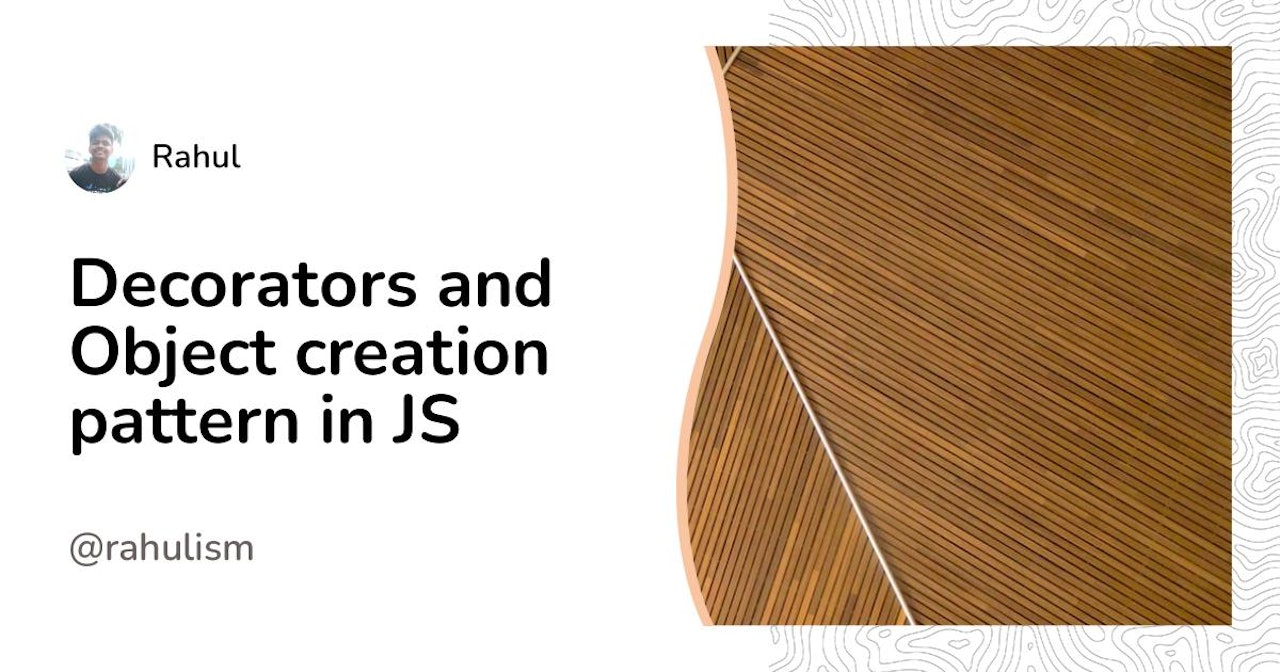Object creation mechanisms increase the flexibility and reuse of existing code. Here in this post, we will see the Object Creation Pattern in JavaScript.
Some patterns to create an object are:
- Factory pattern
- Constructor pattern
- Prototype pattern
- Constructor / Prototype pattern
Factory Pattern
The factory pattern uses a function to abstract away the process of creating specific objects and returning their reference. It returns a new instance whenever called.
function createFruit(name) {
const obj = new Object();
obj.name = name;
obj.showName = function () {
console.log("I'm " + obj.name);
}
return obj;
}
const fruitOne = createFruit('Apple');
const fruitTwo = createFruit('Orange');
fruitOne.showName(); // I'm Apple
fruitTwo.showName(); // I'm Orange
Constructor Pattern
In the constructor pattern, instead of returning the instance from the function, we use the new operator along with the function name.
function createFruit(name) {
this.name = name;
this.showName = function () {
console.log("I'm " + this.name);
}
}
const fruitOne = new createFruit('Apple');
const fruitTwo = new createFruit('Orange');
fruitOne.showName(); // I'm Apple
fruitTwo.showName(); // I'm orage
Prototype Pattern
The prototype pattern adds the properties of the object to the properties that are available and shared among all instances.
function Fruit(name) {
this.name = none;
}
Fruit.prototype.showName = function() {
console.log("I'm " + this.name);
}
const fruitOne = new Fruit('Apple');
fruitOne.showName(); // I'm Apple
const fruitTwo = new Fruit('Orange');
fruitTwo.showName(); // I'm Orange
Constructor / Prototype pattern
This is a combination of the constructor and prototype patterns. The constructor pattern defines object properties, while the prototype pattern defines methods and shared properties.
function Fruit() { }
Fruit.prototype.name = name;
Fruit.prototype.showName = function () {
console.log("I'm " + this.name);
}
const fruit = new Fruit();
fruit.name = 'Apple';
fruit.showName(); // I'm Apple
What is a decorator pattern?
The decorator pattern is a structural design pattern that attaches additional responsibilities to an object dynamically. This is a concept of adding extra functionality to the original structure.
However, keeping it decoupled and clean.
The decorator pattern adds new behaviour to objects dynamically at runtime wrapping itself around the original object. Multiple decorators can add or override functionality to the original object.
 View Website
View Website
 View Website
View Website
 View Website
View Website
Example:
function Fruit() {
this.cost = function () { return 100; };
}
function Orange(fruit) {
var v = fruit.cost();
fruit.cost = function () {
return v + 75;
}
}
function Apple(fruit) {
var v = fruit.cost();
fruit.cost = function () {
return v + 200;
};
}
var fruit = new Fruit();
Orange(fruit);
Apple(fruit);
console.log('Total Cost', fruit.cost()); // Total Cost: 375
It looks like Inheritance?
Inheritance and the decorator pattern allows changing object behaviour. But how they achieve this behaviour change is where inheritance and the decorator pattern are different.
The decorator would be difficult to implement when derived classes need to access non-public fields or methods in the parent class. The decorator pattern eliminates the problem of exploding class hierarchy encountered with inheritance.
THANKS FOR READING ⚡


Comments (0)